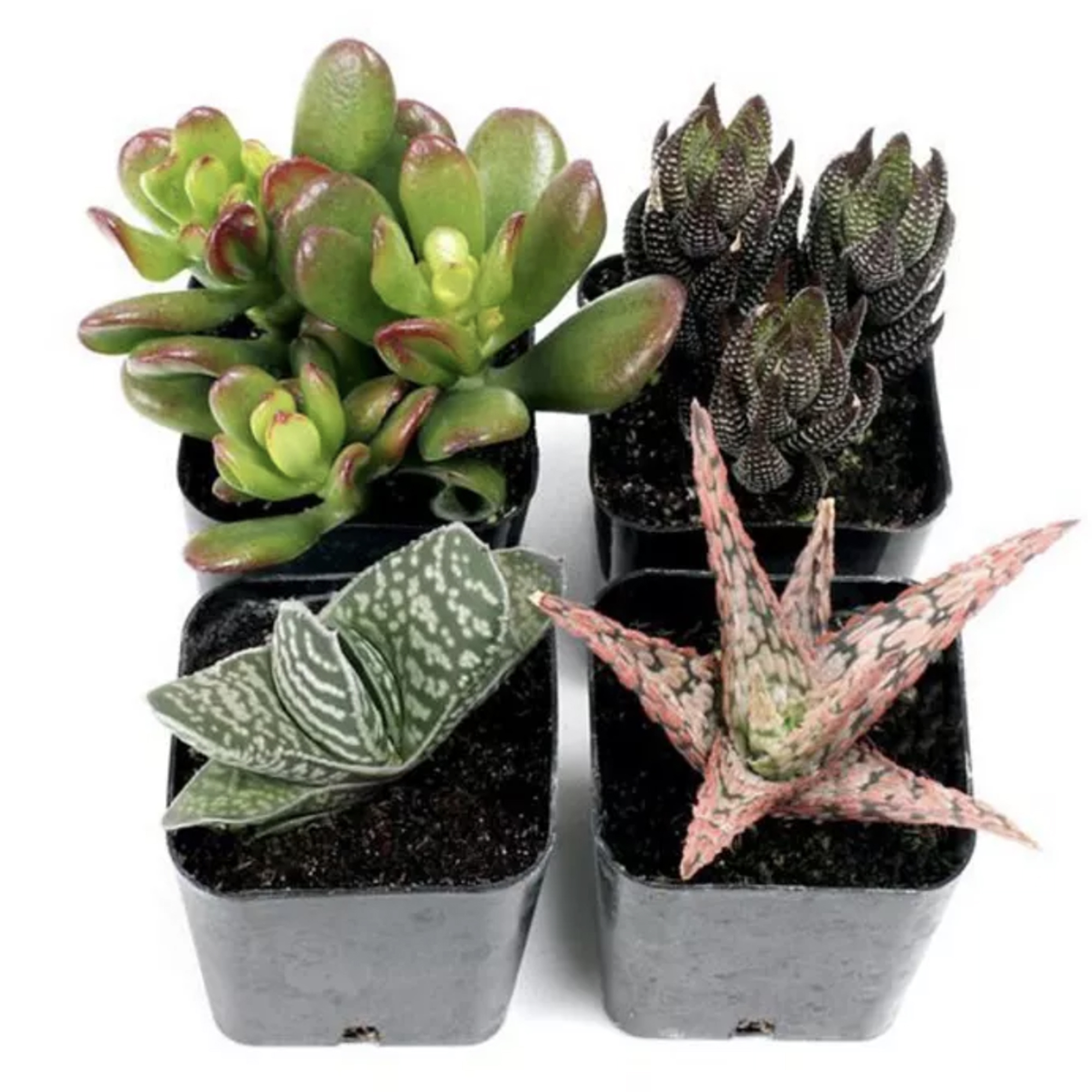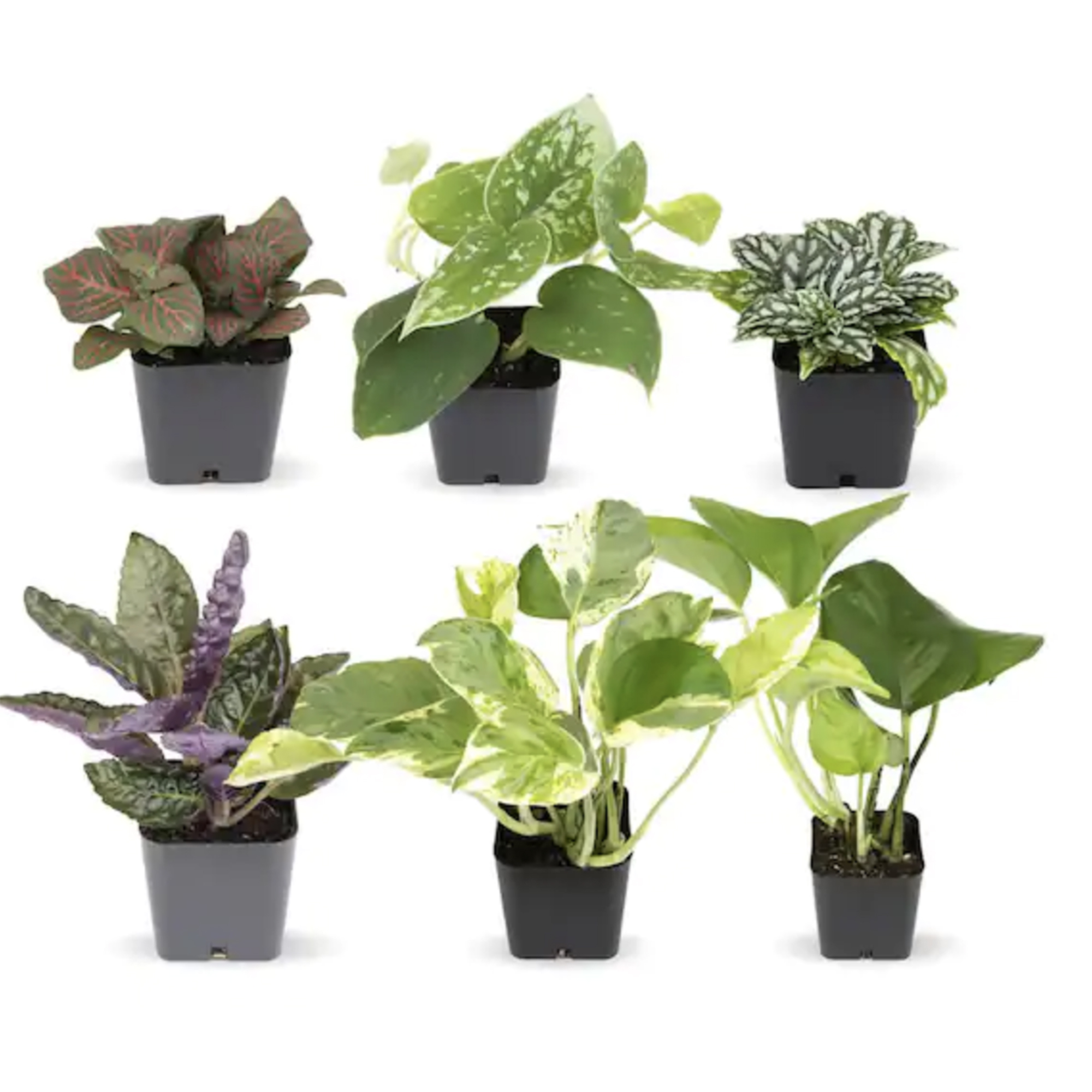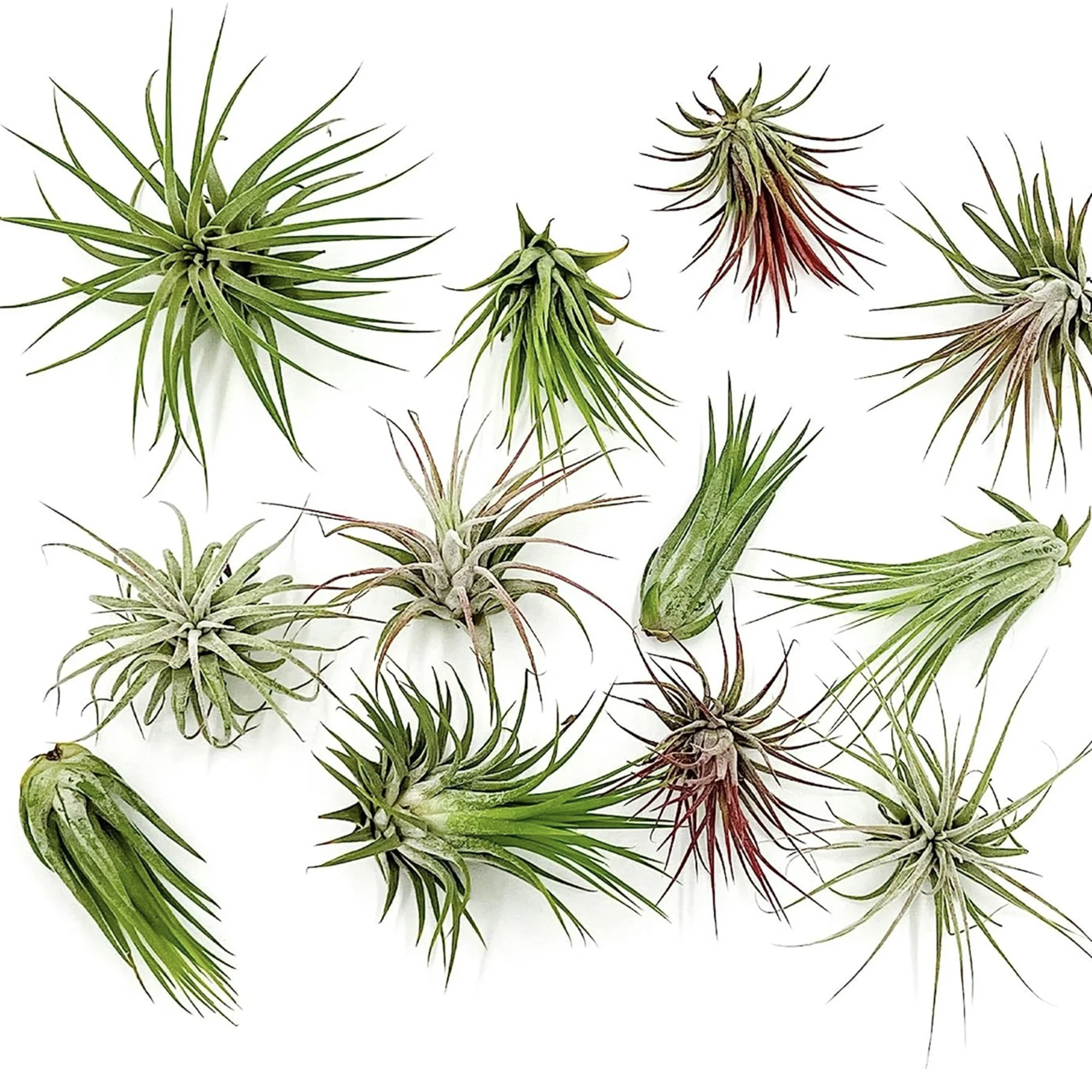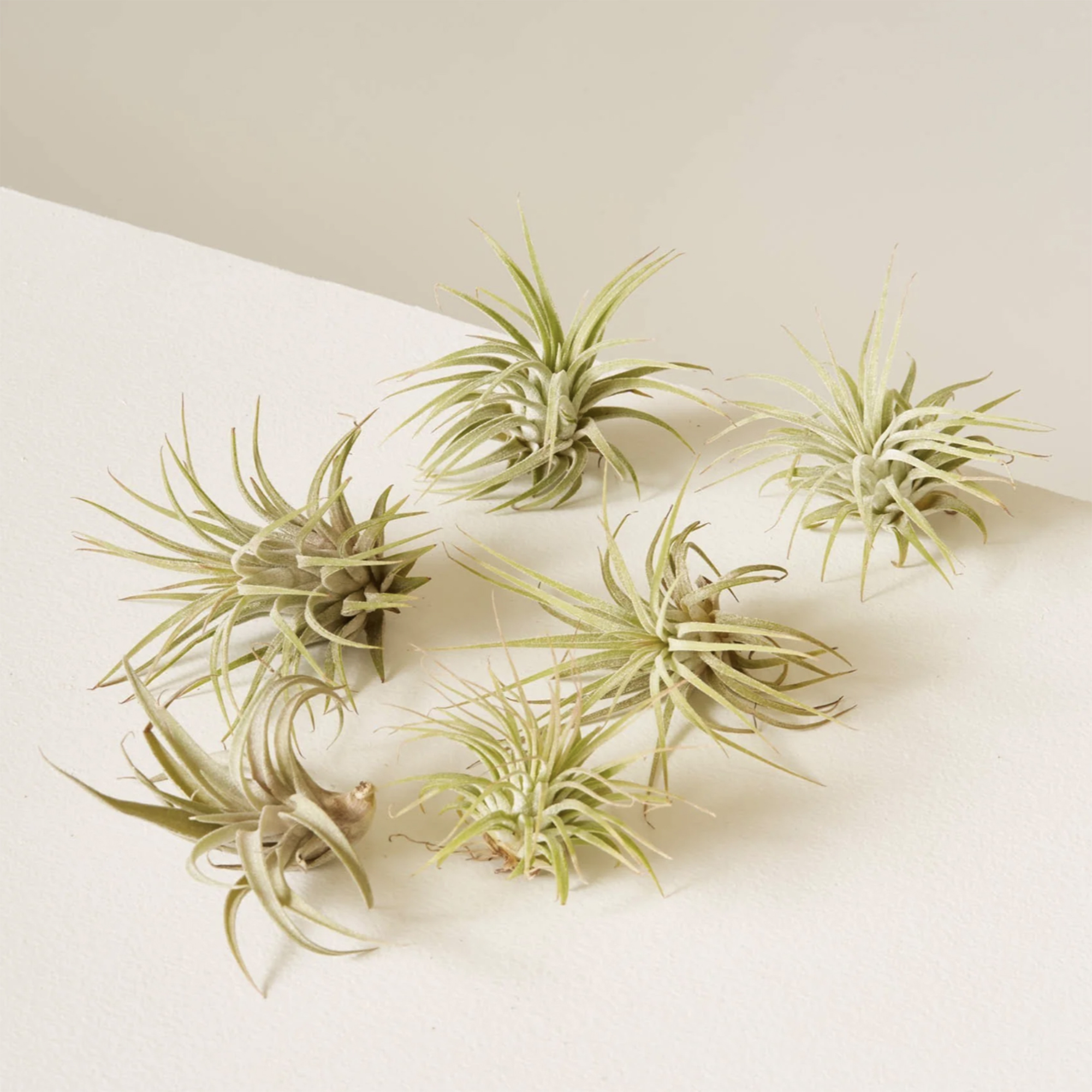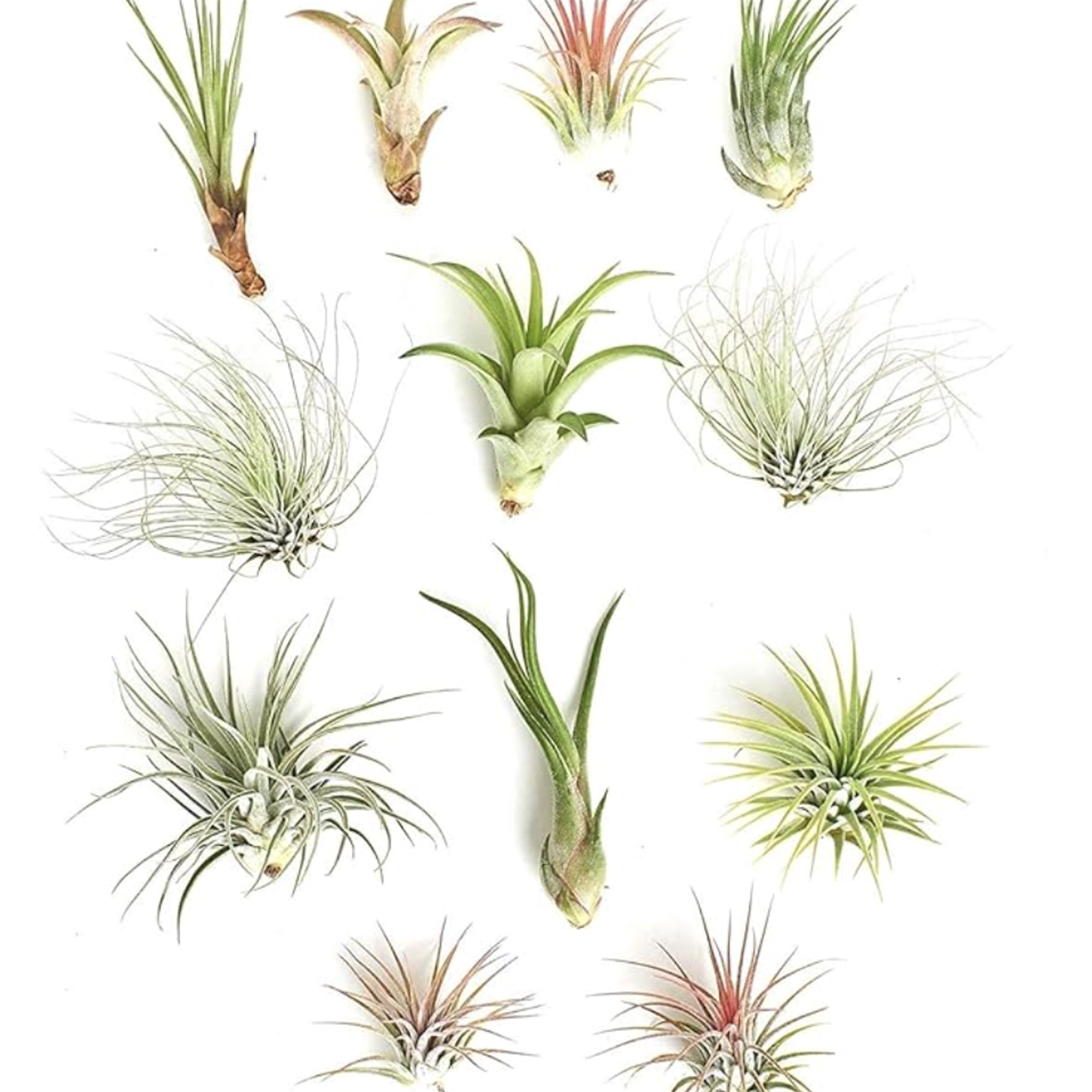Best terrarium plants – 10 choices from indoor plant experts
All of these options will create bold displays and thrive in a terrarium environment
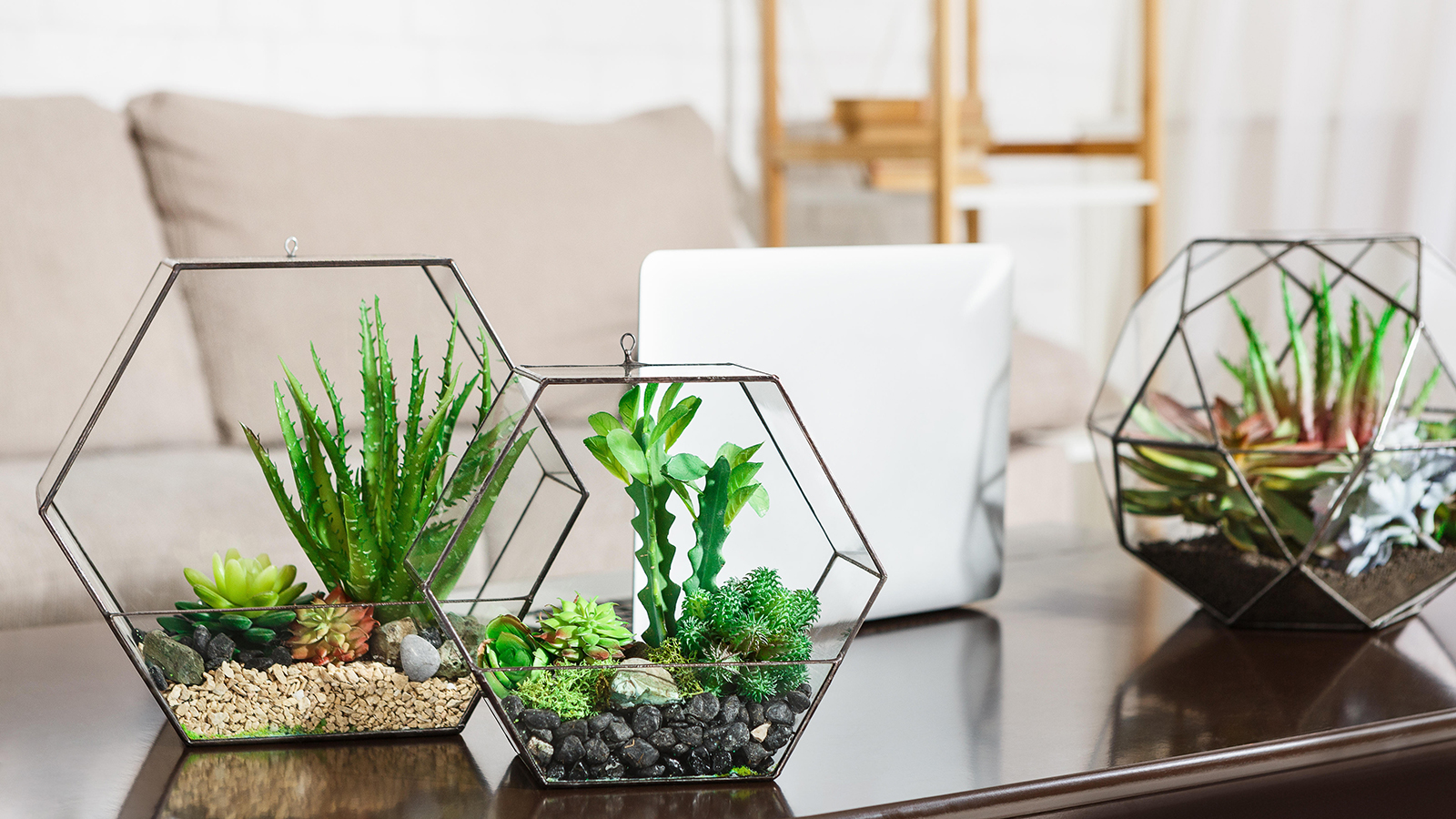

Terrariums have surged in popularity in recent years, and are a once again firm favorite among many plant parents.
Understanding the best terrarium plants to choose is crucial to make sure you're picking plants suited to this particular growing environment, and that your terrarium will be long-lasting.
As well as the style of the containers themselves, the plants inside a terrarium make a strong design statement and there's lots of scope for getting creative with them. If you want more than one terrarium, you could cluster them together and give them a theme – perhaps by focusing on ferns, for instance. Or, you can create mini landscapes that showcase several different varieties of plants.
One thing's for sure – as indoor plant trends go, terrariums are set to be around for the long haul.

Modern geometric shapes and glass bowls look good grouped together to form a terrarium plant collection
10 of the best plants for terrariums
There are many different types of plants that can be used to make a terrarium. Right from the get-go, a key consideration is whether you opt for an open or closed style of terrarium, as you need to choose your plants accordingly.
When choosing the best terrarium plants, it's important to consider the size of your terrarium container, the type of environment you want to create, do you need low light indoor plants for example. And the level of terrarium care you are willing to take on.
Here is our selection of the best terrarium plants together with expert tips on why these varieties work so well.
1. Mini ferns

Smaller, young indoor ferns are perfect for setting up in a terrarium or bottle garden. They are a great choice for terrariums because they're relatively easy to care for, love moist and humid conditions, and can tolerate low light levels.
Design expertise in your inbox – from inspiring decorating ideas and beautiful celebrity homes to practical gardening advice and shopping round-ups.
Ferns are one of the best terrarium plants because they thrive in the enclosed environment. Certain ferns are also low maintenance indoor plants.
Aaditya Bhatta is the founder of Plantscraze. Some of his favorite ferns for terrariums include the maidenhair, 'bird's nest' and 'button' varieties. He particularly recommends the 'fluffy ruffle' (shown above) and 'peacock' ferns for closed terrariums.

Aaditya worked as a horticulturist for over a decade. He's covered everything from seeding, growing, repotting, pruning, and other caring methods.
Shop terrarium plant sets
2. Creeping fig (Ficus pumila)
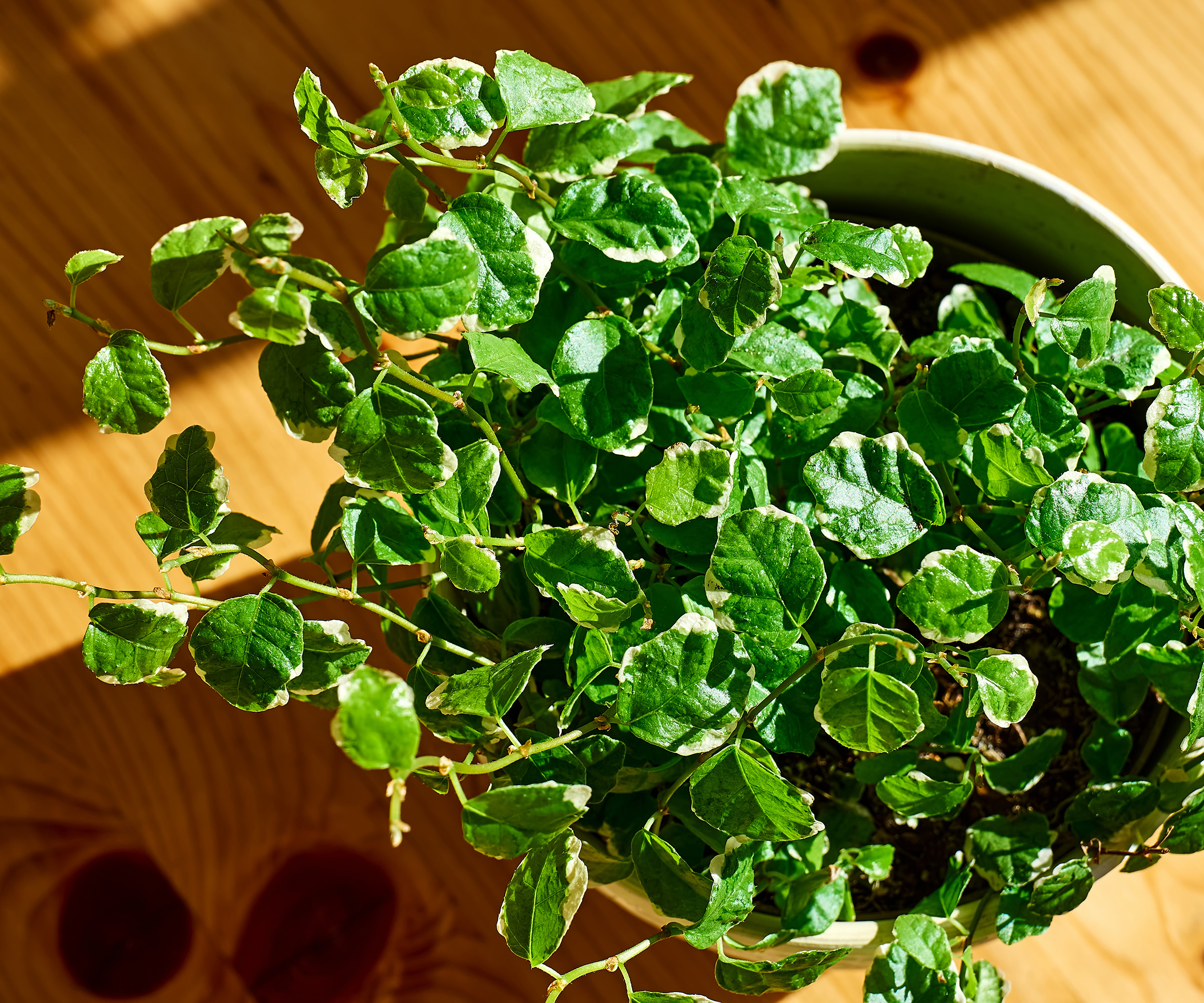
The creeping fig is an easy-to-maintain terrarium plant that is perfect for beginners. Its trailing vines are covered with small, heart-shaped leaves in a variety of colors, ranging from bright green to deep purple.
'This plant prefers to be kept in moist, well-drained soil and does best in bright, indirect light,' says horticulturist Taylor Galla of Gardenaider.com.
Low maintenance is the name of the game with creeping figs. 'I get enthusiastic about this plant as it's arguably the easiest terrarium plant there is,' says Dan Jones of Terrarium Tribe. 'Planting? No need,' he continues. 'All you need to do is drop a plant cutting or two in the container, and all the hard work will be done for you.'

Co creator of Terrarium Tribe, the leading online source for all things plant terrarium.
3. Nerve plant (Fittonia)
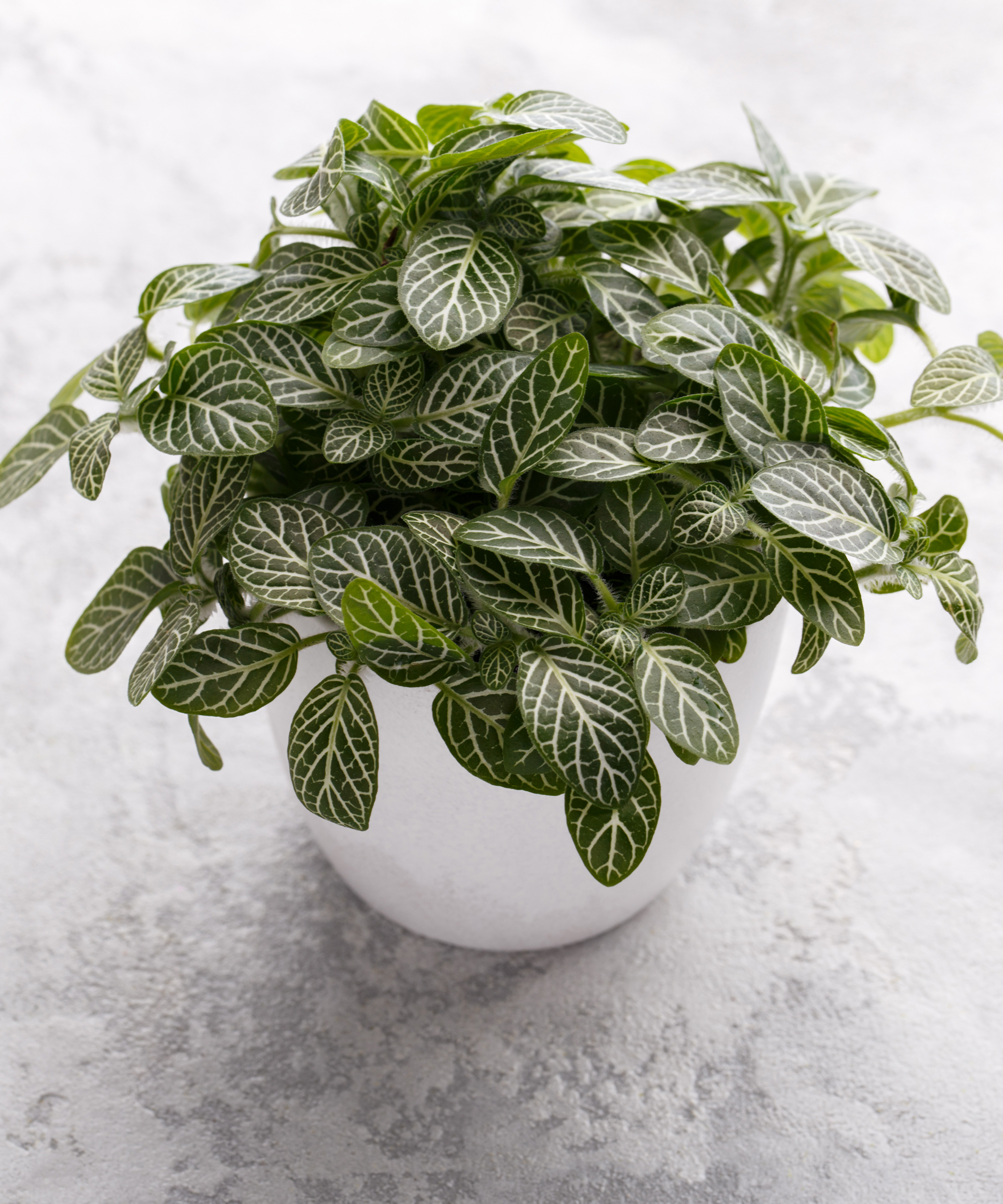
Adding a low-growing fittonia to a terrarium is a beautiful indoor garden idea.
They like indirect light and high humidity, and require only moderate watering so that the compost is kept just moist.
'Bold and bright, ornamental-looking foliage is the hallmark of fittonia plants,' says Dan Jones. 'Their characteristic striking venation always comes through strong, giving rise to the common name – nerve plant. They are also known as mosaic plants.'
'Fittonia is a great choice for terrariums due to its vibrant foliage,' agrees Taylor Galla. 'The oval leaves come in a variety of colors, ranging from white to purple.'
4. Peperomia
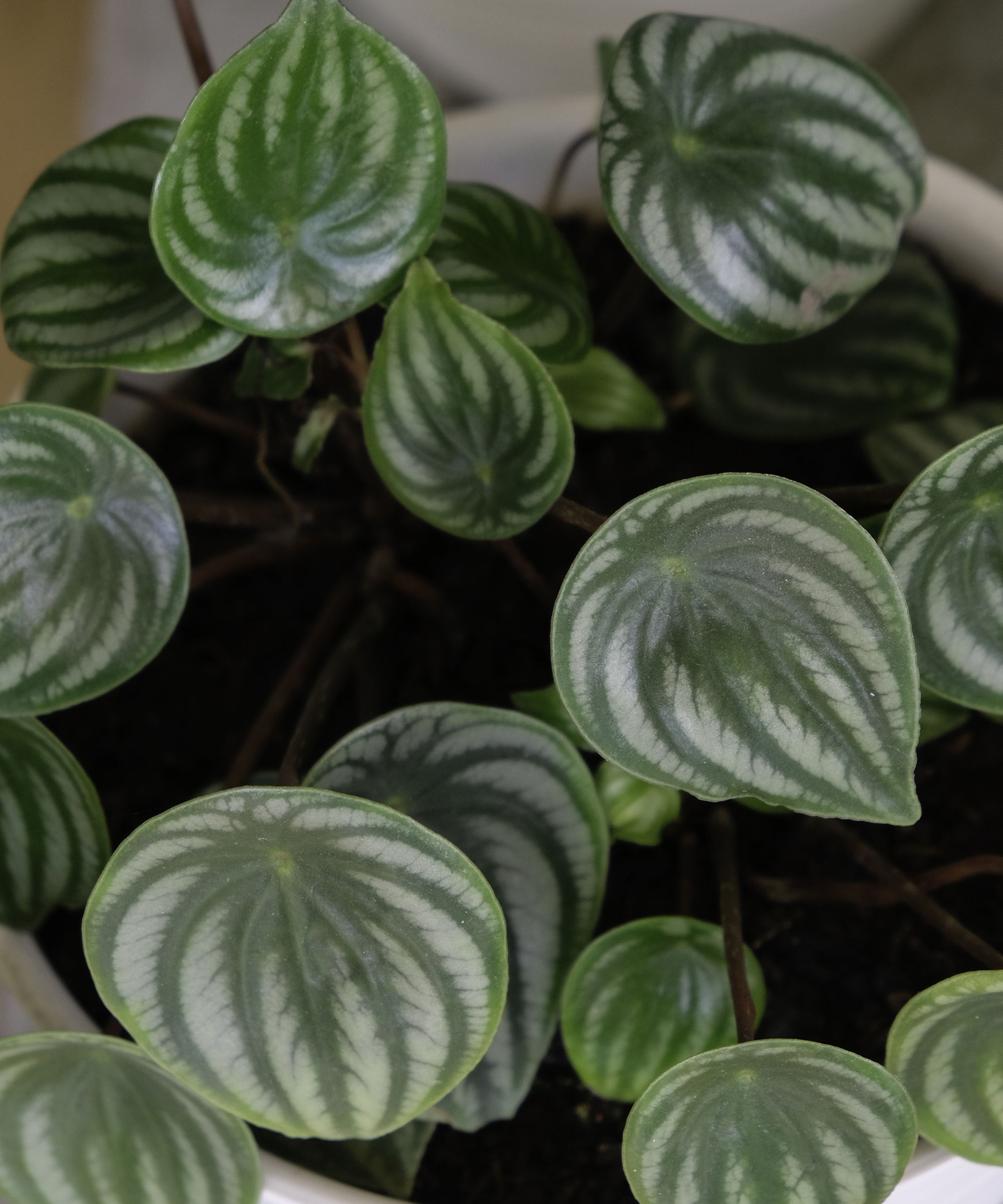
Peperomia is an easy indoor plant that is perfect if you're just getting started with terrariums. 'It has rounded foliage with a variety of color options, ranging from bright green to deep red,' says Taylor Galla. Peperomia does best in bright, indirect light and prefers moist, well-drained soil.
The raindrop peperomia earned its common name due to the tear-drop shape of its leaves – a handy visual reminder of its preference for high humidity. 'When placed in the right conditions, this plant baby can produce white to light green flowers in a cylindrical, tail-like shape,' explains Dan Jones.
'Meanwhile, because of its love of humid environments, the coin leaf peperomia is a fantastic centerpiece in a terrarium, as well as a good bathroom plant, as long as some drainage is provided to keep the roots healthy,' says Dan.
Pretty much the entire Peperomia genus is terrarium-ready, and there are lots to choose from. Vines like string of coins, string of turtles and trailing jade, and pretty feature plants such as watermelon peperomia (shown above) and 'Piccolo Banda' are sure to add interest to your terrarium planting.
5. Chinese money plant
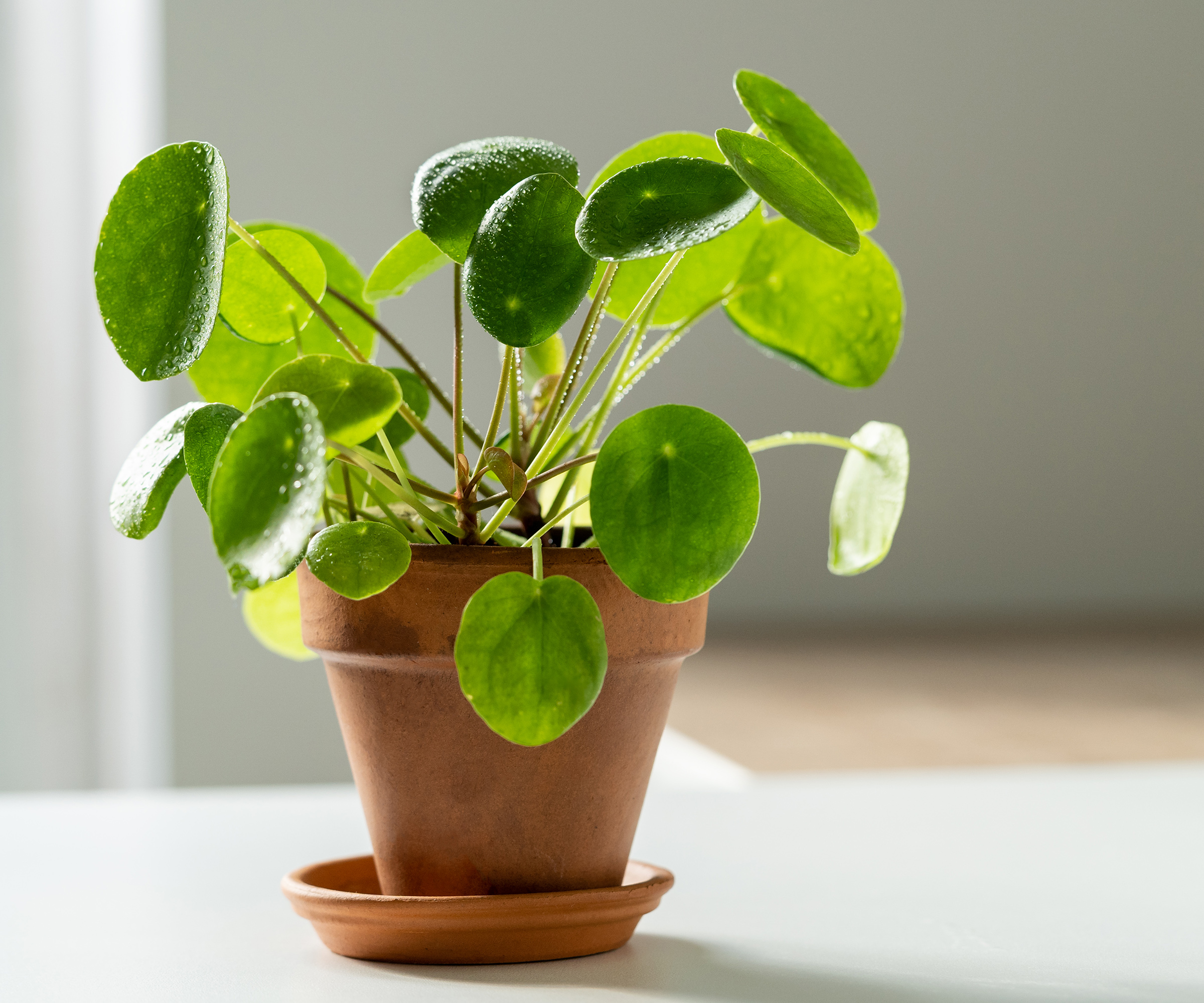
Pilea peperomioides is often referred to as the Chinese money plant, and is also known as the pancake plant. 'Its round, flat leaves grow in a rosette pattern and vary in color from bright green to deep jade,' says Taylor Galla. 'This plant is perfect for terrariums as it can tolerate low light and prefers to be kept in moist but well-drained soil.'
It's an easy-going plant that is good for beginners as it won't mind if you forget to water or feed it. It's also easy to propagate Chinese money plants and they produce lots of baby plants at their base, that are ideal fillers if you're growing your terrarium collection. Place each baby plant in an inch of water and roots will quickly develop. You can then pot up your new plants.
In the same family, Pilea cadierei is another fantastic terrarium species thanks to its low-growing habit, stunning foliage and easy-care nature. 'Often called the aluminum plant for the beautiful silver variegation that’s splashed across the leaves, it will brighten up any terrarium,' says Dan Jones.
6. Polka dot plant

The polka dot plant has vivid leaves with a signature speckled patterning, making them a statement piece for any terrarium.
Part of the Hypoestes genus of shrubs, these petite plants originally hail from Madagascar, but are popular as indoor plants all over the world, says Dan Jones.
Often found as eye-catching pink houseplants, they also come in red and purple colorways. All look good as plant focal points in terrariums. A position in bright indirect light is best for polka dot plants to make sure their leaves develop all those bright colors.
7. Air plants (Tillandsia)
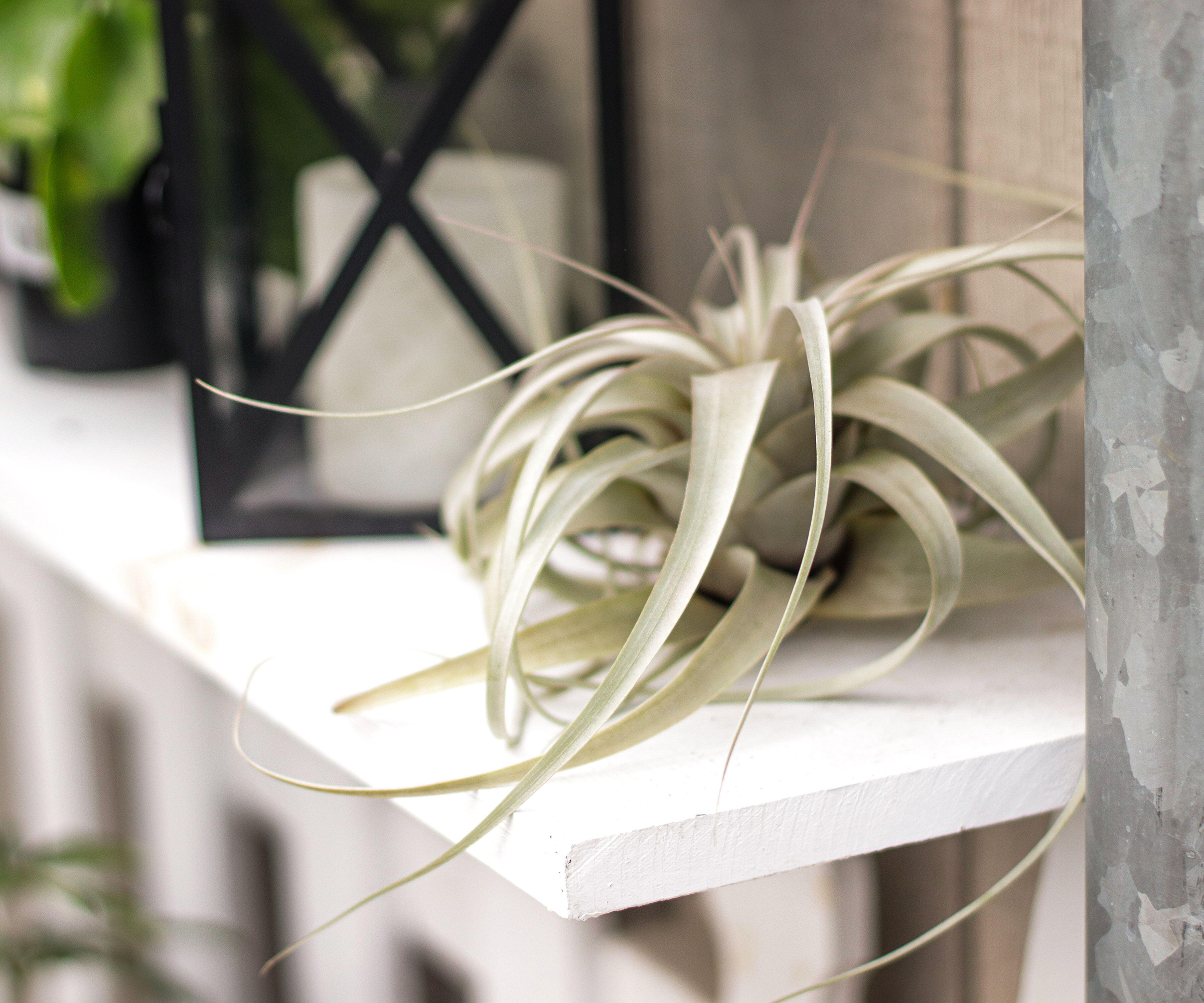
Most air plants do well in terrariums, as long as they get plenty of indirect sunlight, air circulation, and water.
When it comes to air plant care, it's pretty straightforward. They get nutrients from the air and don't require soil. They thrive under glass, so terrariums are an ideal environment, where they can attach themselves to gravel. Start with an open terrarium – that will give your plants plenty of air circulation.
Cover the bottom of the terrarium with a base of sand or aquarium gravel. Then, arrange your air plants. They should be slightly angled for best results, because this prevents excess water from collecting inside the plants.
When it comes to watering an air plant, start by removing it from the terrarium and then drop it into a bowl of rainwater or distilled water. In arid climates, you can mist the air plants inside the terrarium with rainwater or distilled water in between longer soaks.
Shop bundles of air plants
8. Prayer plant (Maranta leuconeura)

Prayer plants are native to the jungle, so it's only natural that they make excellent terrarium plants as they do well in a closed environment – especially when positioned in a spot with indirect sunlight.
It's already a popular houseplant in its own right, but in the terrarium, the prayer plant takes on a whole new dimension with its tri-colored patterned foliage really making a splash.
Thriving in warm, humid conditions in evenly moist soil, it forms clumps of upright leaves and is an ideal background plant for your terrarium mini-landscaping ideas. The attractive variegated leaves with dark stems work well when planted alongside other foliage plants.
9. Baby's tears (Soleirolia soleirolii)
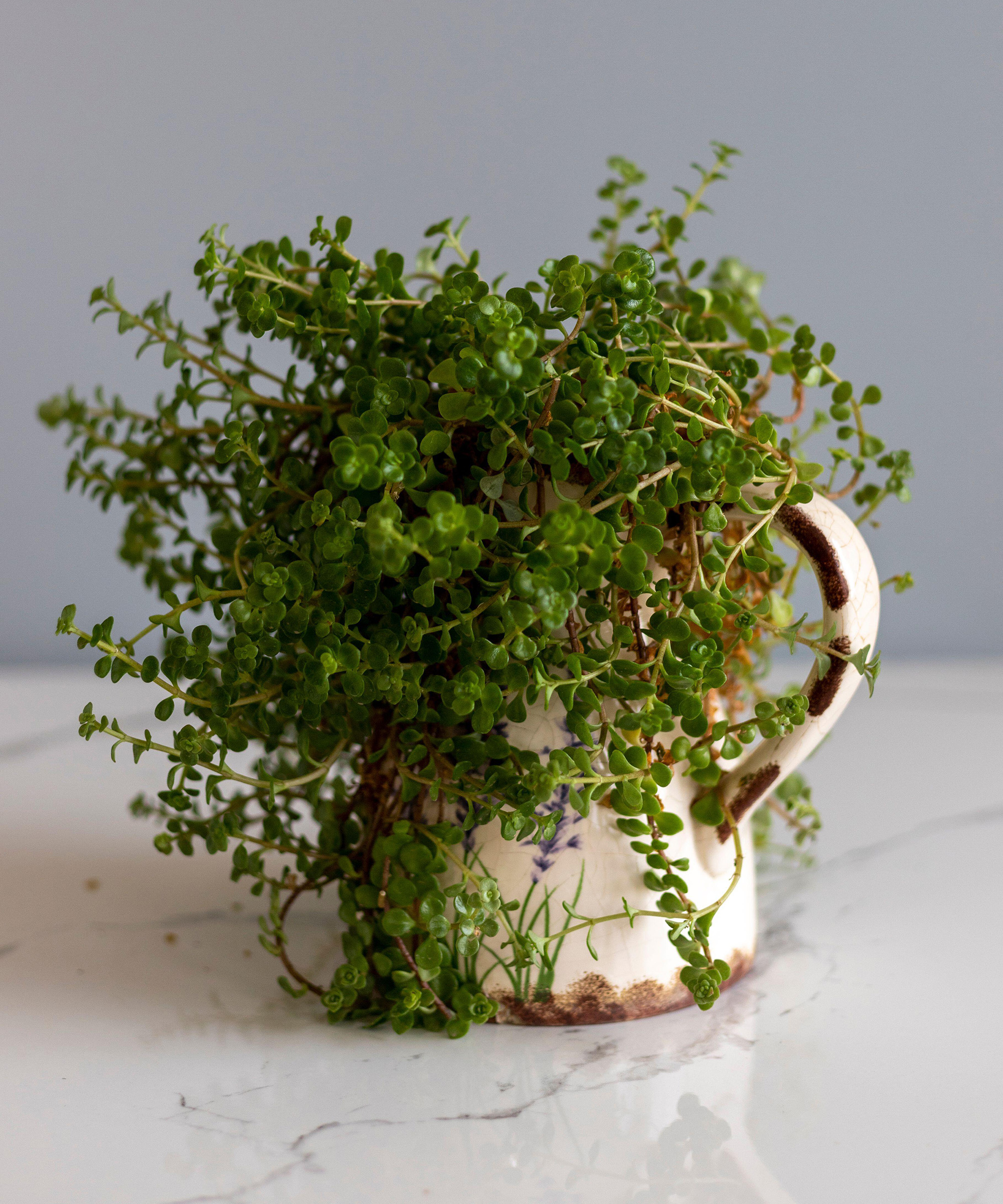
The attractive layers of pretty rosette leaves make baby's tears one of the best terrarium plants. They have a creeping habit that quickly covers the soil.
Baby's tears is a tropical plant that thrives in lower-light conditions and is often used in terrariums as they love a humid environment.
These are easy plants if you pay attention to their water, humidity, and light needs. They require regular, consistent watering and fertilizer, so will need a little input from you if they're going to stay happy in their new home.
This terrarium staple is easy to propagate. They will form roots wherever their stems touch the soil.
10. Jade plant (Crassula ovata)

This easy, evergreen beauty is easily one of the best terrarium plants. Jade plants are succulents, which makes them fairly resilient and easy to grow indoors.
When it comes to terrariums, the jade plant is a great choice. They're easy-to-grow houseplants with woody stems and oval leaves making them look like miniature trees in a small container.
They are low maintenance, have a long lifespan, prefer bright indirect light, and have low humidity requirements. An open terrarium is ideal for jade plants as they need more frequent watering than most other succulents.
FAQs
How to choose terrarium plants?
There are several considerations to take into account when choosing the best terrarium plants. It's kind of obvious, but plants do need to be able to fit in your glass container. Avoid vegetation touching the sides of the container, because that will make your terrarium feel crowded.
'The most likely plants to prosper in your terrarium fare well in humid environments,' says Aaditya Bhatta, founder of Plantscraze. There's a huge trend for using cacti and succulents in terrariums, but you will need to think this through. 'Although cacti and succulents don't like humidity very much, you can make up for it by using a small-opening glass container for these varieties.'
'Miniature tropical plants are the gold standard for terrariums,' says Dan Jones of Terrarium Tribe. 'You want plants that are going to love the warmth and humidity of a terrarium, but not shoot up so much that they outgrow their space.'
Whatever plants you choose, you can maintain their health in your terrarium by simulating their natural habitat.
What plants do best in a small terrarium?
The best plants for a small terrarium are those that prefer high humidity and do not need much light or water. Some good examples are ferns, mosses, ivy, and philodendron.
Other low-maintenance, small plants that can survive in a terrarium are African violets, spider plants, and jade plants. These plants require only a minimal amount of light and water, and they can easily grow in a terrarium.
There are lots of choices when it comes to slightly more unusual plants, too. 'Miniature fern varieties like the 'Fluffy Ruffles' fern and the 'Lemon Button' fern are perfect for small terrariums,' says Dan Jones of Terrarium Tribe.
'They love the humidity, stay relatively small, and can even be divided to create even smaller plants. I also like to use delicate little vines like Pilea glauca to add some texture and wild growth.'
What plants are not good for terrariums?
'Any plants that need airflow and/or arid conditions are a bad fit for closed terrariums,' says Dan Jones of Terrarium Tribe. 'Succulents and cacti will quickly rot in a humid terrarium environment, and so these should be grown in open terrariums or simply in pots.'
Plants that are not suitable for terrariums include plants that require full sun, those that need frequent pruning or deadheading, and plants that grow very tall. Plants that grow quickly are not a good choice, either. Additionally, spiny or thorny plants can be difficult to maintain in a terrarium.
Do plants grow better in a terrarium?
Yes, some plants can grow better in a terrarium because the enclosed environment creates an ideal environment for them to thrive. 'The closed environment of a terrarium helps to maintain moisture, retain heat, and provide protection from external elements.
'That tiny ecosystem you create, support, and maintain can keep indoor plants alive for a very long time,'says Aaditya Bhatta, founder of Plantscraze.
'However, managing the terrarium environment is challenging. Drainage, plant selection, and pH all matter. Water is very vital. In most cases, very little is required if the terrarium is sealed.'
If you're interested in new and unique directions to take your indoor plant collection on. Then have a look at our houseplant trend piece for further inspiration.

Lifestyle journalist Sarah Wilson writes about garden design and landscaping trends for Homes & Gardens. She has studied introductory garden and landscape design, and also has an RHS Level 2 qualification in the Principles of Plant Growth and Development. She is a regular contributor to Homes & Gardens and Livingetc. She has also written for Country Living, Country Homes & Interiors, and Modern Gardens magazines
